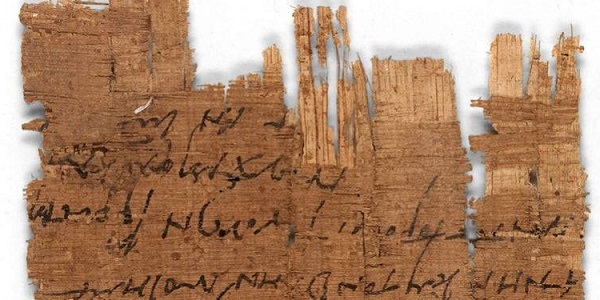A letter from the past
Publish date 13-01-2021

«Greetings, my lord, my incomparable brother Paolo. I, Arriano, greet you, praying that everything is for the best in your life».
Thus begins the oldest known letter written by a Christian to date, classified as P. Bas. 2.43. It dates back to 230 AD. and comes from Roman Egypt.
The document is kept in the papyrological archive of the University of Basel and was studied by Sabine Huebner, professor of ancient history. The text of the letter is very interesting because it shows us a cross-section of the life of the first Eastern Christians, often judged in the Roman world as misfits since they did not take part in some public events such as religious rituals (including the cult of the emperor) and games in the circus.
We find a wealthy family here. Arriano and Paolo are two young offspring from the Egyptian hinterland, well educated, landowners and with public offices.
In fact, the letter speaks of the "gymnasiarch", the office due to those who ran a school or gym. Arrano also discusses with his brother who would be appointed to the city council.
The letter then continues with some familiar news: "Our lady mother is well and greets you and your wife and dear children and our brothers and all the others."
But this is not what attracted Professor Huebner's attention. In fact, the document is the only one among the 65 ancient documents preserved in the papyrological archive of the University of Basel to have a particular conclusion: "I pray that you may be well in the Lord".
"The use of this abbreviated formula, known as nomen sacrum, leaves no doubt about the Christian beliefs of the editor of the letter. It is an exclusively Christian formula, which is familiar to us thanks to the New Testament, ”says Professor Huebner.
Furthermore, the name of the recipient is also revealing. In fact, Paul was not a very common name at the time and the fact that his mother chose him for one of her children reveals the intention of referring to the more famous Paul of Tarsus.
Finally, thanks to prosopographic studies, Professor Huebner managed to date the letter to 230 AD. which therefore precedes by 40-50 years the Christian testimonies known so far.
Agnese Picco
NP November 2020







